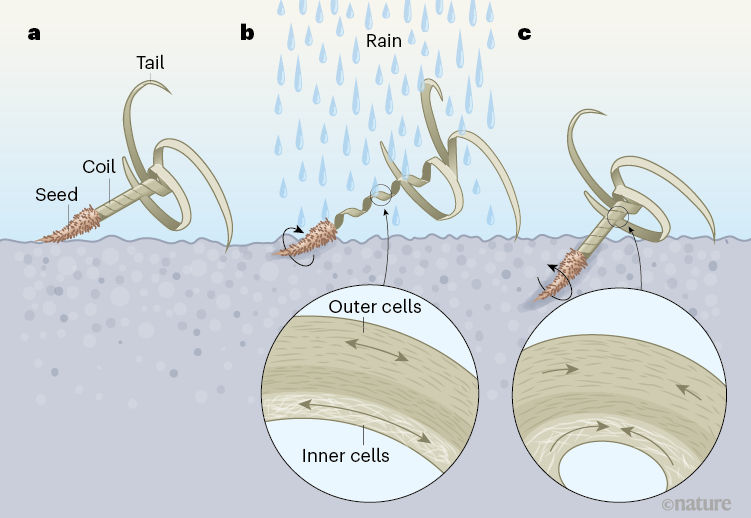In a recent paper published in nature, researchers from the US and China report a solution to one of the biggest issues in aerial seeding. Aerial seeding is exactly what it sounds like: the deployment of seeds by aircrafts, such as airplanes, helicopters, or – more recently – drones. It is mostly used for large scale reforestation, for example after wildfires. Previously, this method suffered from very low yields, caused by the condition that aerially deployed seeds typically remain exposed on the surface, where they are susceptible to predation by animals. In their new paper, Luo et al. present a solution to this problem: Self-burying seed carriers, which can drill their payload into the soil, simply powered by rain. The idea is built on the principle that many solid materials change their shape when they soak up water. To make their product biodegradable, they used thin layers of wood. If the wood is molded into the shape of a coil, it uncoils upon water absorption. Essentially, this enables the carrier to drill its payload into the soil, where the seed can germinate safely. First tests suggest that the utilization of seed carriers may increase germination rates by five-fold, which is extremely promising!



